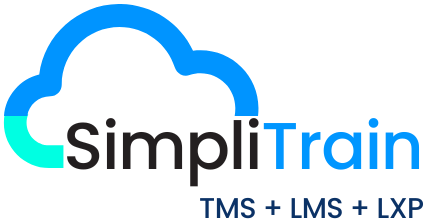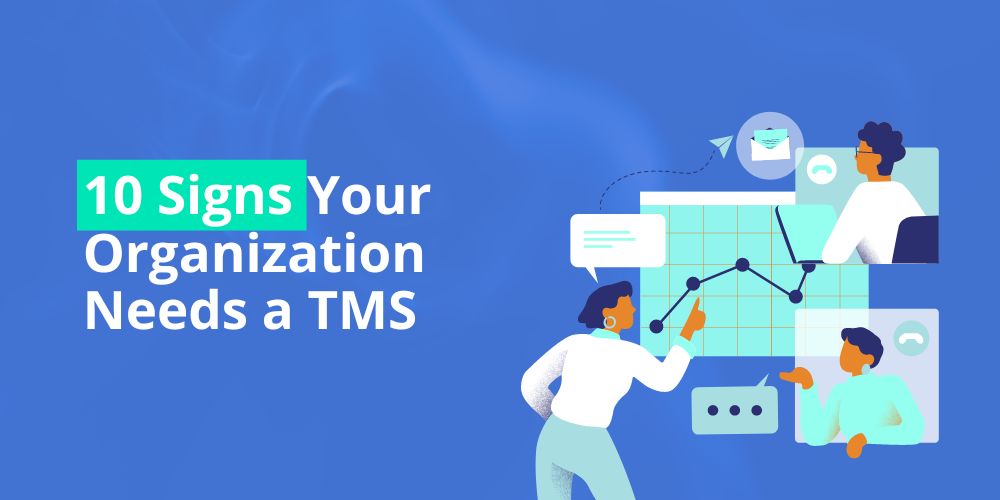It’s Monday morning, and you’re greeted by a mountain of paperwork on your desk, a never-ending list of training sessions to schedule, and a nagging feeling that there has to be a better way. Sounds familiar? If so, you’re not alone. Many organizations find themselves grappling with the challenges of manual training management processes, from juggling spreadsheets to tracking certifications and ensuring compliance. But fear not, because help is at hand in the form of Training Management Software (TMS).
In this article, we’ll embark on a journey to uncover the telltale signs that your organization is ready to bid farewell to the chaos of manual training management and embrace the streamlined efficiency of TMS. From drowning in paperwork to struggling to measure training impact, these signs are like flashing neon arrows pointing towards the solution your organization needs.
But how do you know if your organization is ready to invest in TMS? Here are 10 signs to look out for
1. Manual Training Processes Are Overwhelming
If your HR and training departments are drowning in paperwork and spreadsheets, spending countless hours scheduling sessions, tracking attendance, and managing certifications, it’s time to consider Training Management Software (TMS). Manual processes are not only time-consuming but also prone to errors, leading to inefficiencies and frustration among employees.
“In today’s digital age, the burden of manual administrative tasks can hinder your organization’s productivity and growth. By automating your training processes with TMS, you can free up valuable time and resources, allowing your team to focus on more strategic initiatives.”
2. Lack of Visibility into Training Data
Do you struggle to get real-time insights into your training programs? If you’re relying on disparate systems and manual reports to track training progress, it’s challenging to make data-driven decisions. Training Management Software (TMS) centralizes all training data in one platform, providing you with comprehensive visibility and actionable insights to improve your training initiatives.
“Effective decision-making requires access to accurate and up-to-date information. With TMS, you can gain a holistic view of your training programs, identify trends, and measure the impact of your initiatives, empowering you to make informed decisions that drive business success.”
3. High Turnover Rates
Employee turnover and disengagement can be costly for organizations. If your employees are not receiving the training they need to succeed in their roles, they’re more likely to become disengaged and seek opportunities elsewhere. TMS allows you to deliver personalized training experiences tailored to each employee’s needs, increasing engagement and retention.
“Investing in learning and development is key to fostering a culture of engagement. With TMS, you can create personalized learning paths for your employees, providing them with the skills and knowledge they need to excel in their roles and contribute to the success of your organization.”
4. Compliance Risks Are on the Rise
In industries where compliance is a top priority, such as healthcare, finance, and manufacturing, failing to meet regulatory requirements can result in hefty fines and reputational damage. Training Management Software (TMS) helps you stay compliant by automating compliance training, tracking certifications, and generating audit-ready reports to demonstrate regulatory compliance.
“Compliance training is not just a checkbox exercise; it’s essential for mitigating risks and ensuring organizational integrity. TMS enables you to streamline compliance training processes, stay up-to-date with regulatory requirements, and demonstrate compliance with ease, giving you peace of mind and protecting your organization from potential liabilities.”
5. Inefficient Training Resource Allocation
Are you struggling to allocate training resources effectively? Without visibility into resource availability and demand, it’s challenging to optimize training budgets and ensure that resources are allocated where they’re needed most. Training Management Software (TMS) provides you with insights into resource utilization, allowing you to optimize training resource allocation and maximize ROI.
“Effective resource management is crucial for optimizing training initiatives and maximizing ROI. With TMS, you can gain visibility into resource availability, track utilization, and allocate resources based on demand, ensuring that your training investments are aligned with your business objectives.”
6. Difficulty Scaling Training Programs
As your business grows, so do your training needs. However, scaling training programs can be challenging if you’re still relying on manual processes and outdated systems. Training Management Software (TMS) scales with your organization, allowing you to manage training programs across multiple locations and departments with ease, ensuring consistency and quality across the board.
“Scalability is essential for accommodating the evolving needs of your organization. With TMS, you can easily scale your training programs to meet growing demand, whether you’re expanding into new markets, adding new products or services, or onboarding a large number of new employees.”
7. Limited Accessibility to Training Content
In today’s digital age, employees expect easy access to training content anytime, anywhere. If your training materials are scattered across various platforms and formats, it’s challenging for employees to find and consume relevant content when they need it. TMS provides a centralized repository for all training content, accessible from any device, making learning more convenient and efficient.
” With TMS, you can centralize all training content in one platform, making it easily accessible to employees across the organization, whether they’re in the office, working remotely, or on the go.”
8. Inconsistent Training Quality
Are you struggling to maintain consistency in the delivery of training programs? Inconsistencies in training content, delivery, and evaluation can lead to confusion and frustration among employees, impacting the effectiveness of your training initiatives. Training Management Software (TMS) standardizes training processes and materials, ensuring consistency in quality and delivery across all training programs.
“Consistency is key to ensuring that your training initiatives are effective and impactful. With TMS, you can standardize training processes, materials, and assessments, ensuring consistency in quality and delivery across all training programs, regardless of location or instructor.”
9. Limited Training Impact Measurement
How do you measure the impact of your training initiatives? If you’re relying on anecdotal feedback and outdated metrics to evaluate training effectiveness, it’s challenging to demonstrate the ROI of your training initiatives. Training Management Software (TMS) provides you with robust reporting and analytics capabilities, allowing you to measure the impact of your training programs quantitatively and make data-driven decisions to improve outcomes.
“Measuring training impact is essential for demonstrating the value of your training initiatives and driving continuous improvement. With TMS, you can leverage advanced reporting and analytics tools to track key metrics, measure training effectiveness, and identify areas for improvement, enabling you to optimize your training programs for maximum impact.”
10. Limited Support for Blended Learning
Are you looking to incorporate a blend of online and offline training modalities into your learning programs? Traditional training methods may not support the flexibility and interactivity required for blended learning initiatives. Training Management Software (TMS) offers support for blended learning, allowing you to deliver a mix of instructor-led training, e-learning, virtual classrooms, and on-the-job training, catering to diverse learning preferences and maximizing engagement.
“Blended learning combines the best of both worlds, offering flexibility, interactivity, and personalized learning experiences. With TMS, you can seamlessly integrate online and offline training modalities, delivering a mix of instructor-led sessions, e-learning modules, virtual classrooms, and on-the-job training, to meet the diverse learning needs of your workforce.”
Conclusion
investing in Training Management Software can help your organization address these challenges and unlock the full potential of your training initiatives. By automating and streamlining training processes, gaining visibility into training data, and delivering personalized learning experiences, TMS empowers organizations to drive better outcomes, improve employee engagement, and stay ahead of the competition in today’s dynamic business environment.











